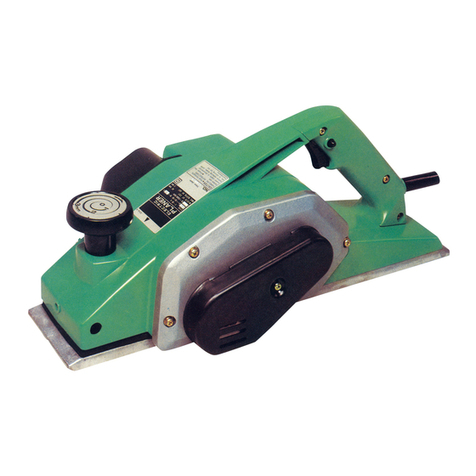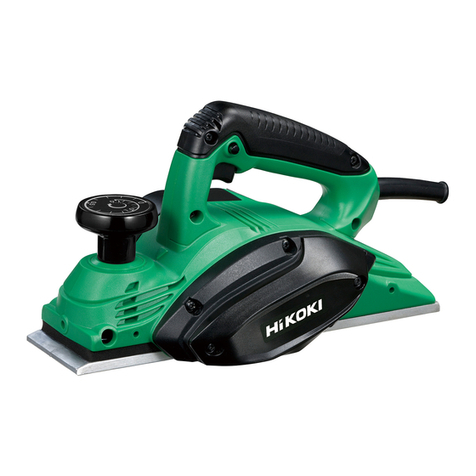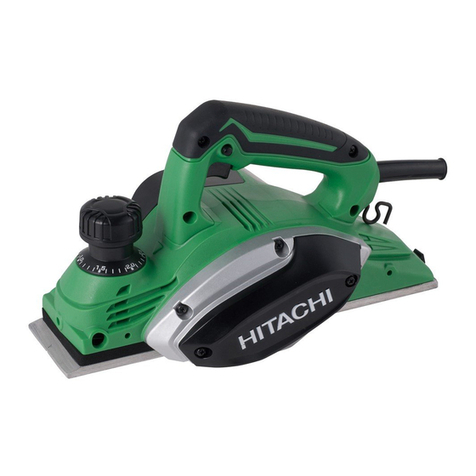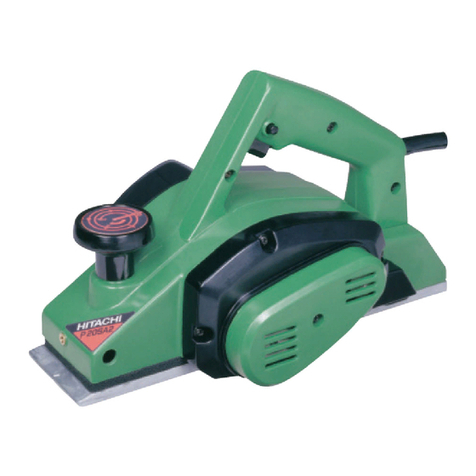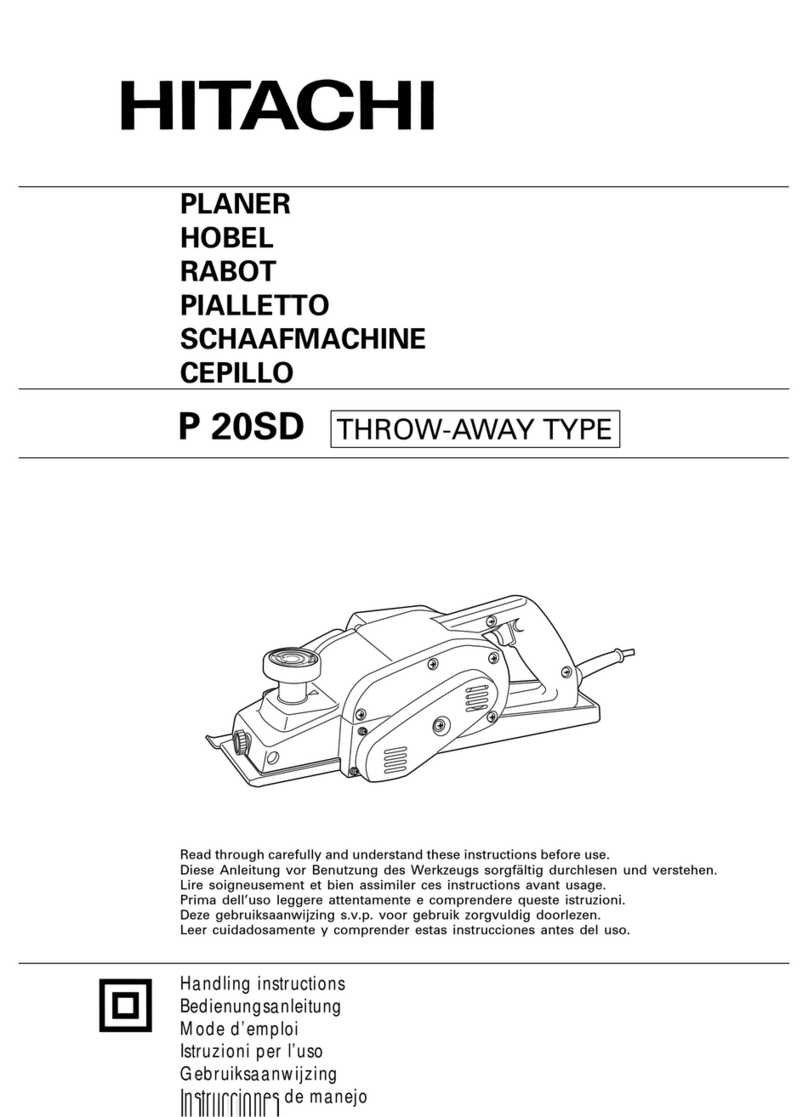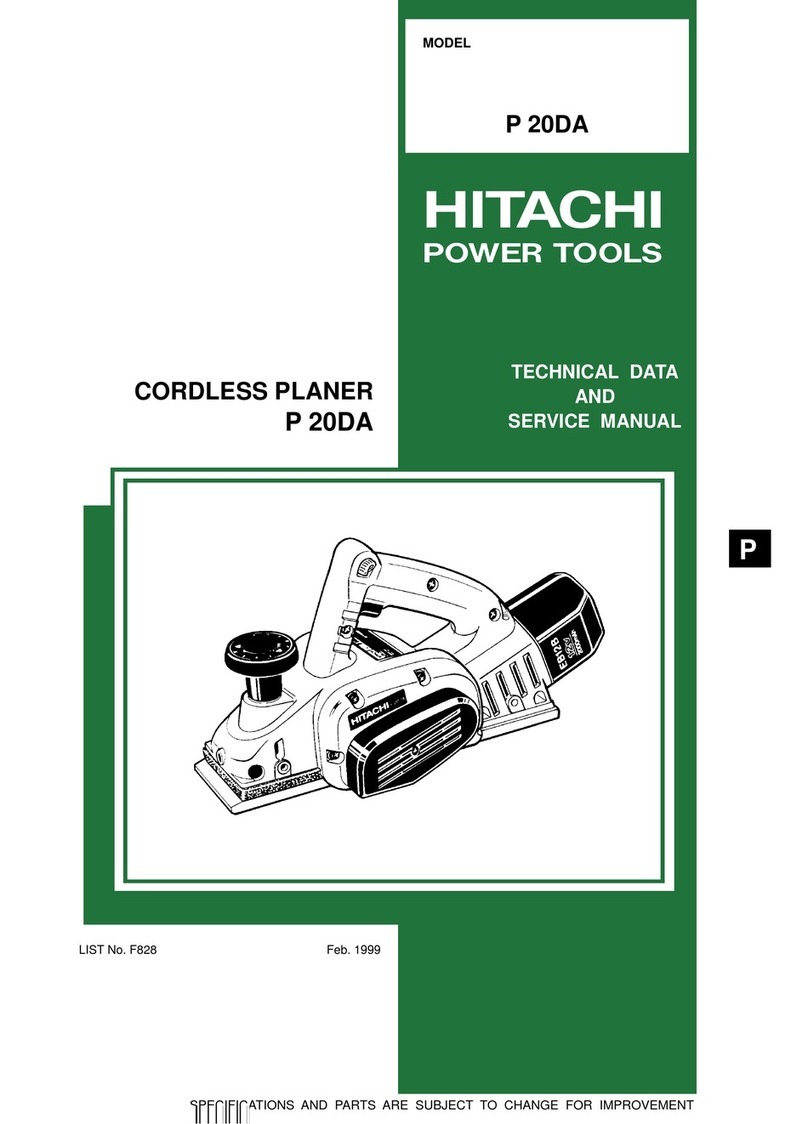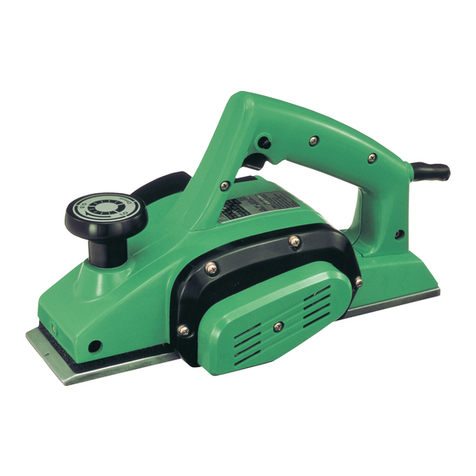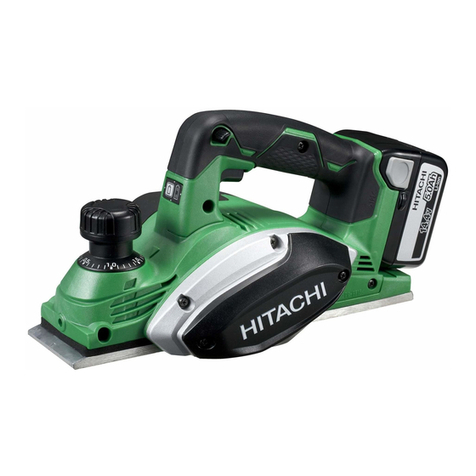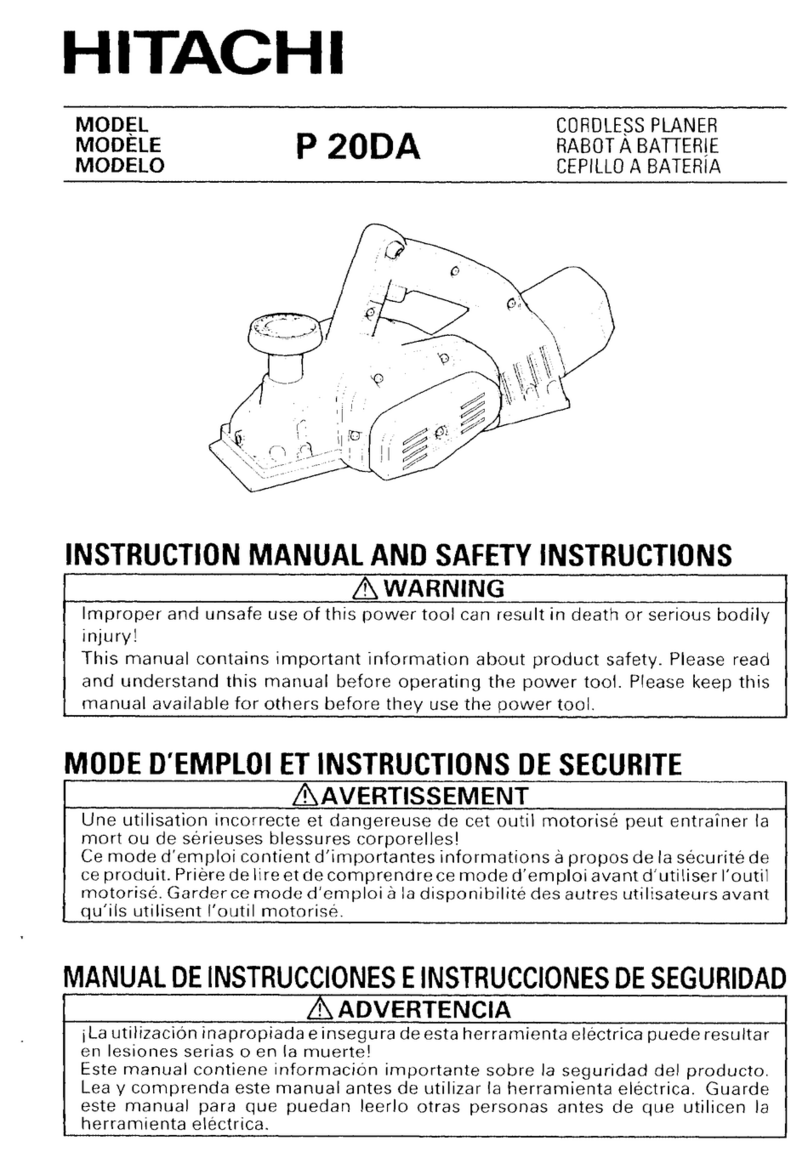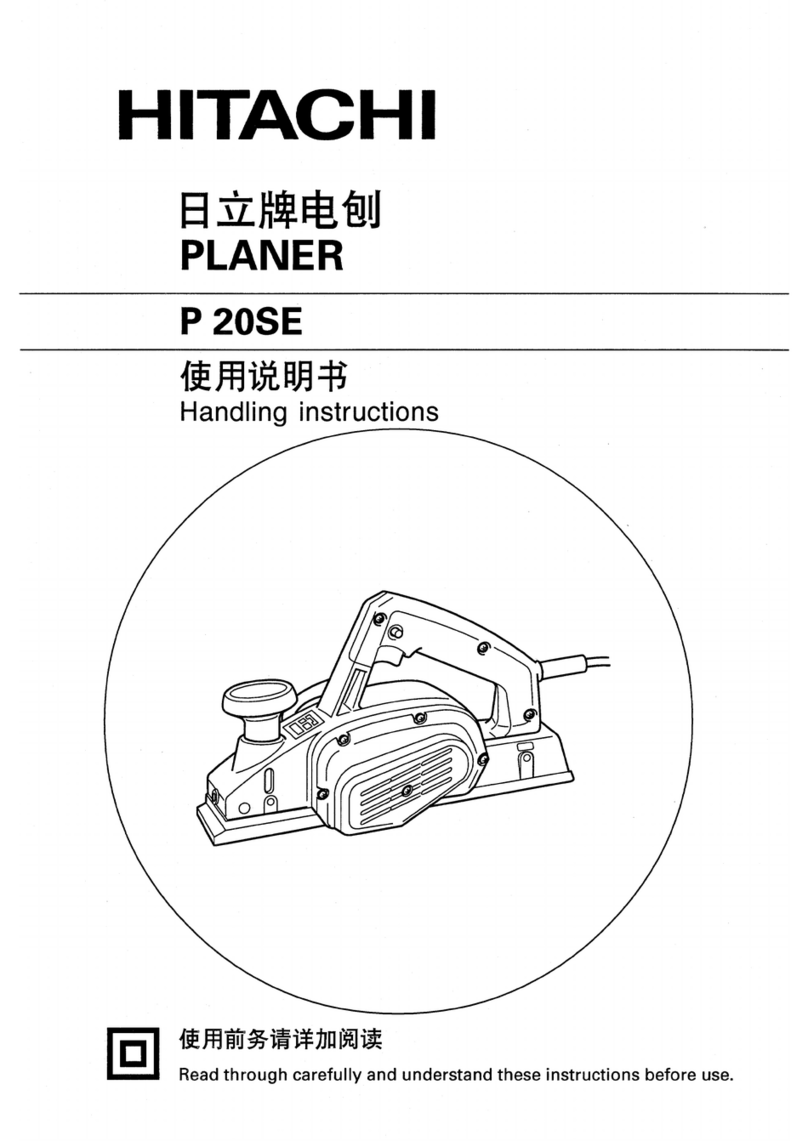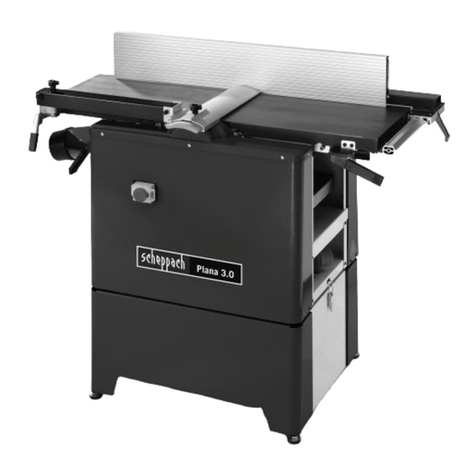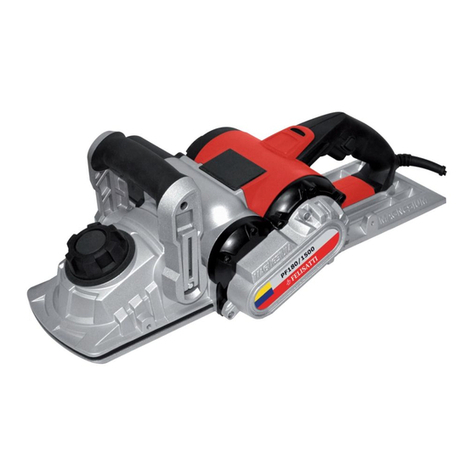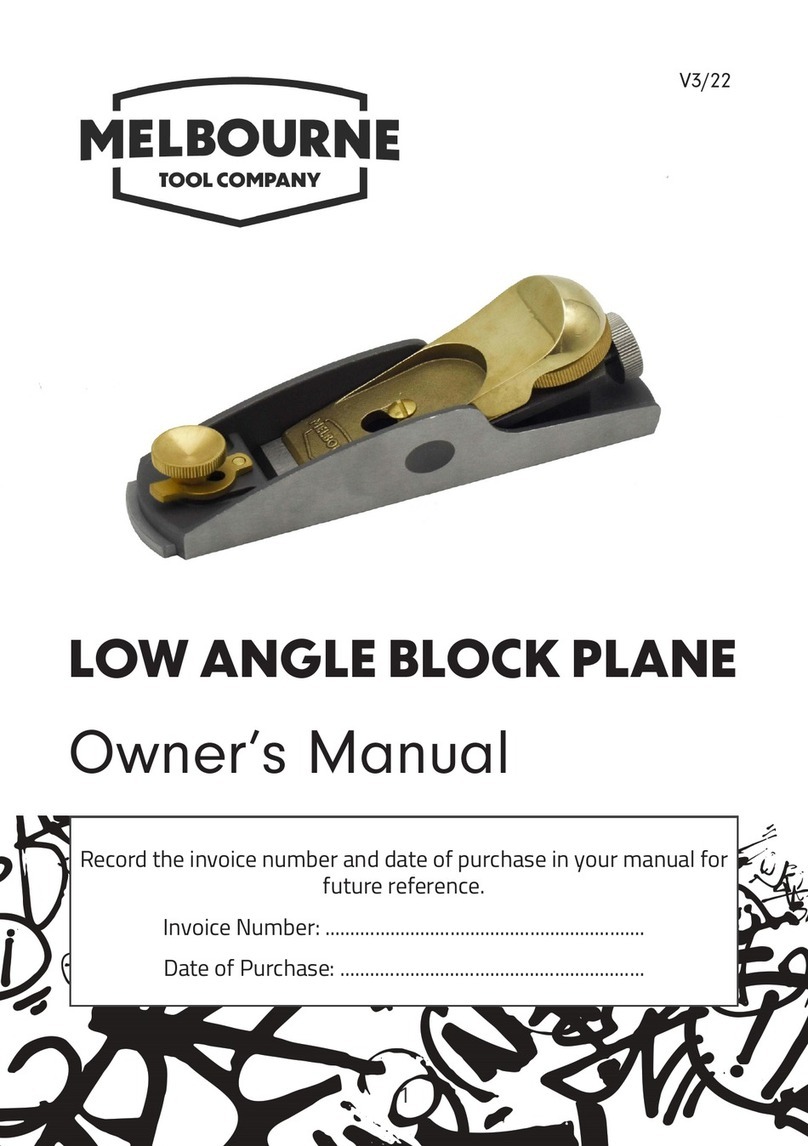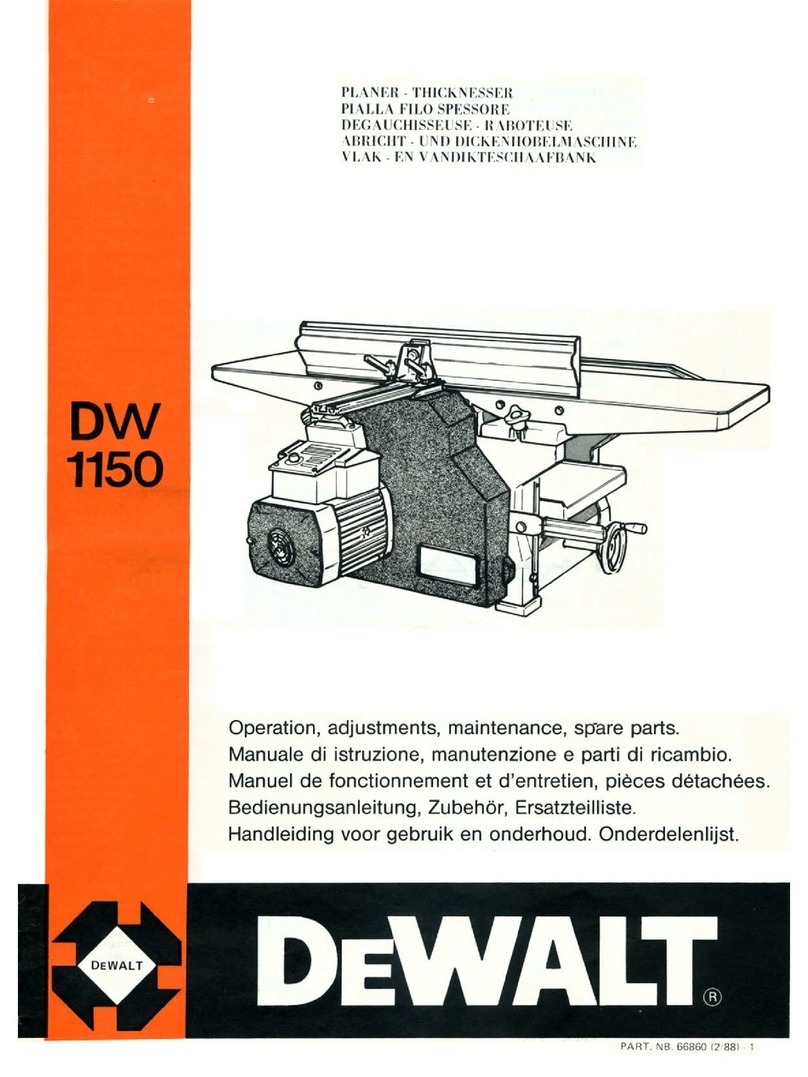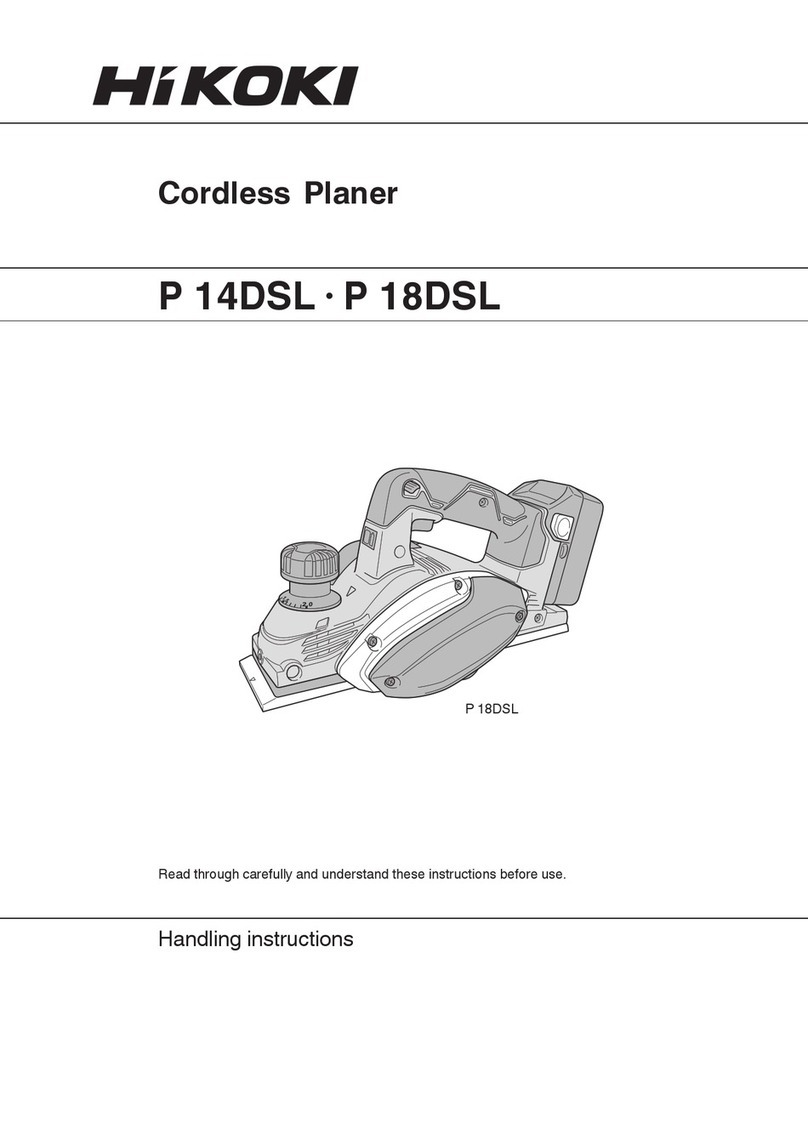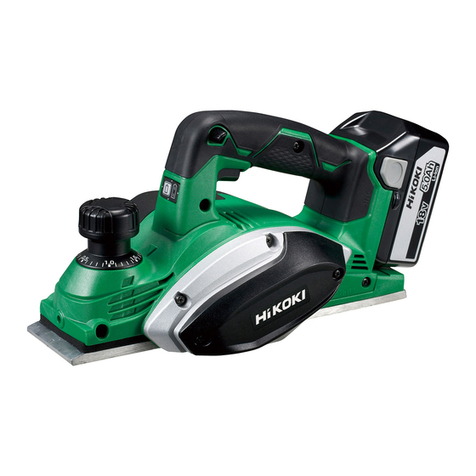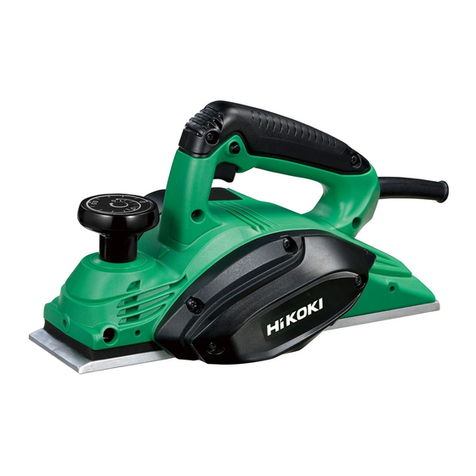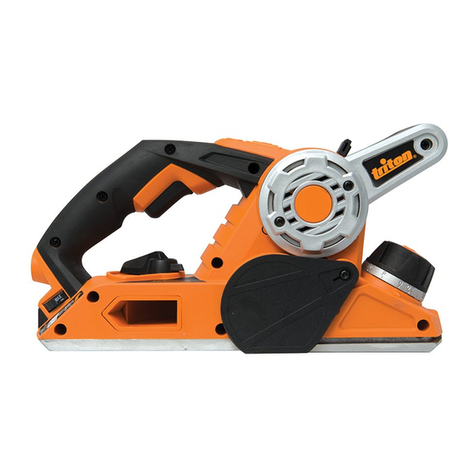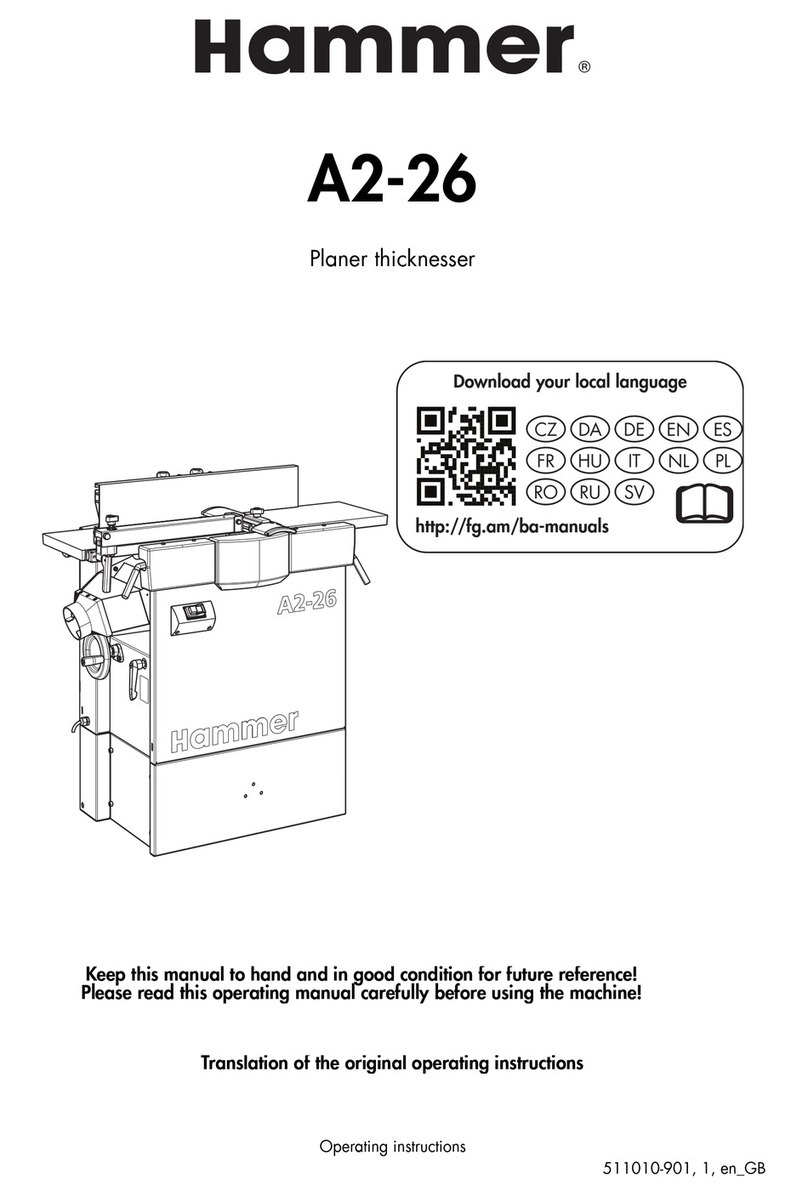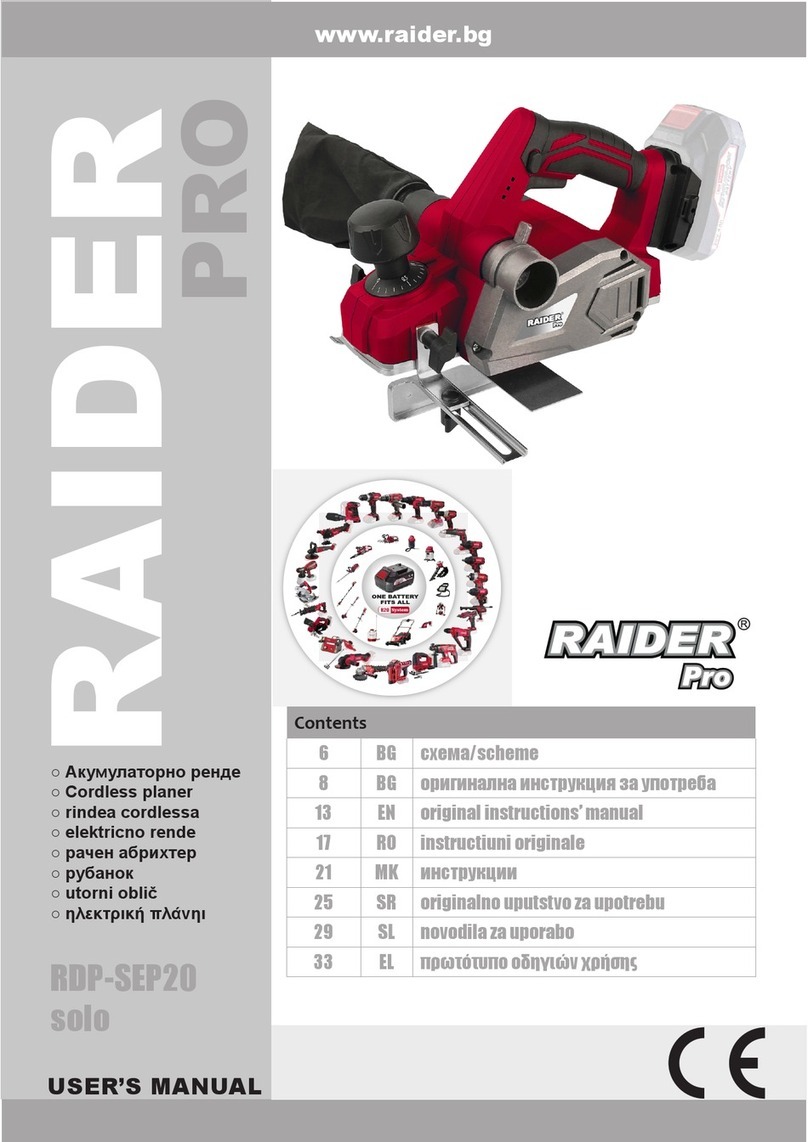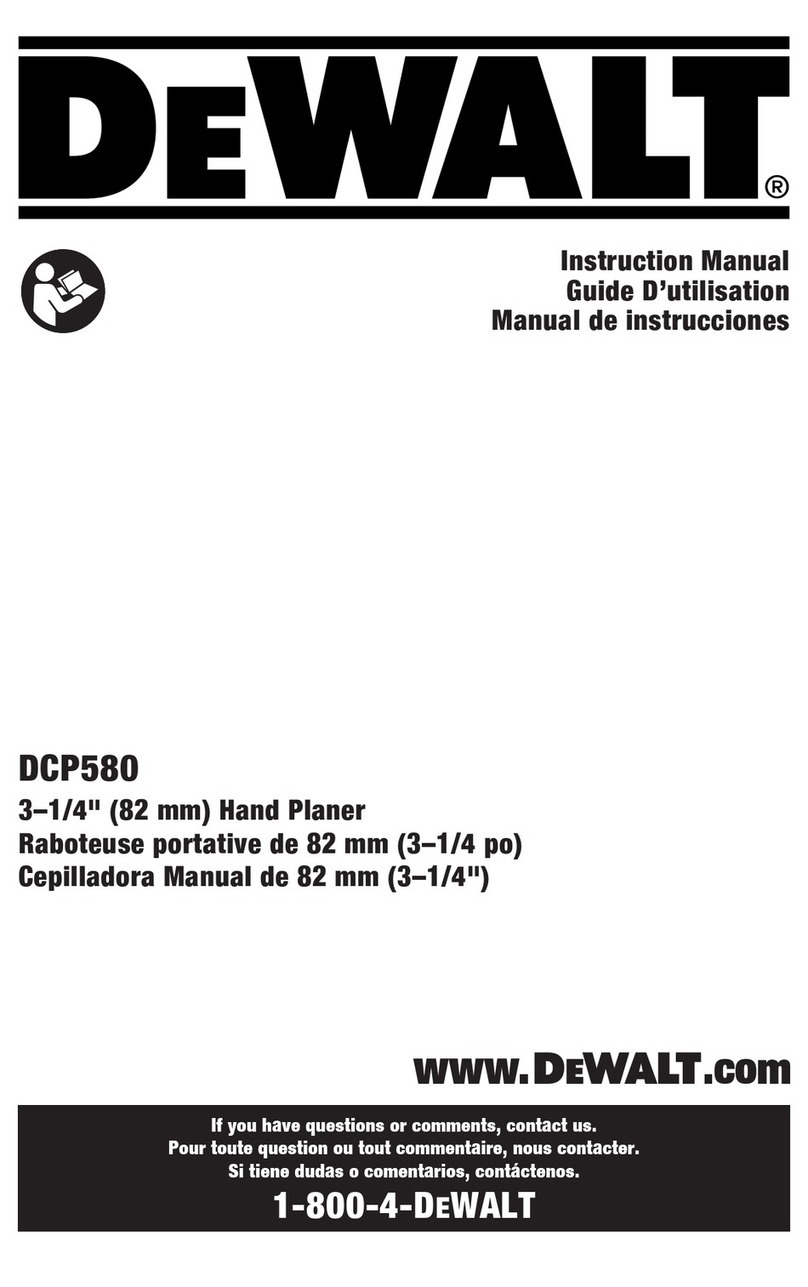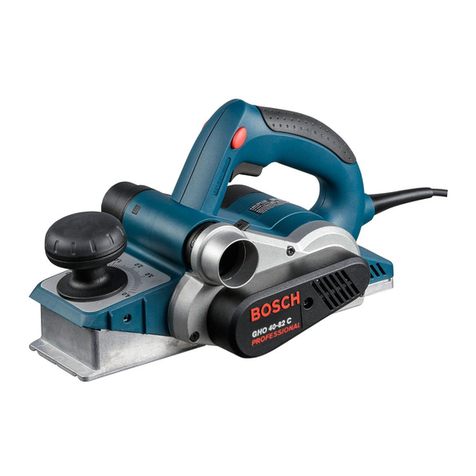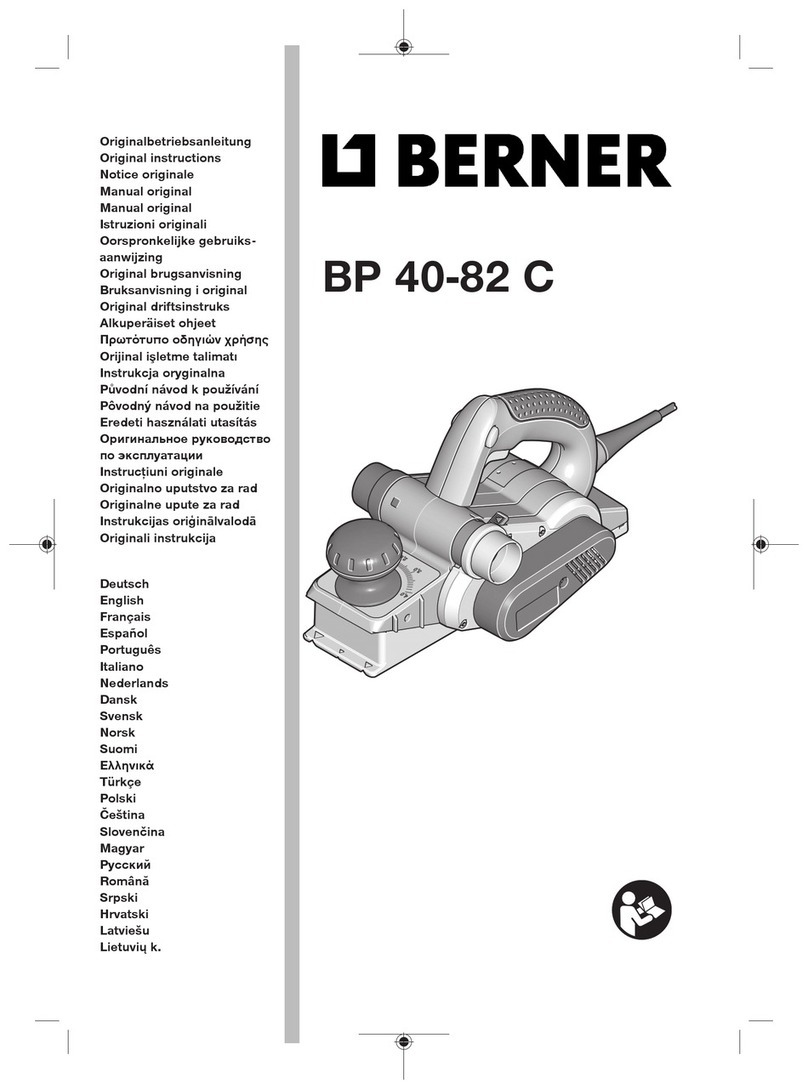
– 5 –
English
PLANER SAFETY
BEFORE USING THE PLANER
TO AVOID MISTAKES THAT COULD CAUSE
SERIOUS, PERMANENT INJURY, DO NOT PLUG IN
THE PLANER UNTIL THE FOLLOWING STEPS HAVE
BEEN READ AND UNDERSTOOD.
1. Your planer comes completely assembled. The only
assembly required is the cutterhead depth
adjustment handle. Mount your planer to a work
bench or an adequate surface.
2. Learn to use the function of the ON/OFF switch,
elevation handle, cutterhead guard, outfeed table,
infeed table and push blocks.
3. Review and understand all safety instructions and
operating procedures in this instruction manual.
4. Review the maintenance methods for this planer.
5. Find and read all the warning labels found on the
planer:
● Read manual before using planer.
● Wear safety goggles.
● Never perform planning operation with cutterhead
guard or belt guard removed.
● Never make planning cuts greater than 1/32”
(0.8 mm).
● Never perform planning cuts on workpieces
shorter than 14” (35.6 cm) in length.
● Turn power OFF, wait for blade to stop and
remove power cord from power source before
adjusting or servicing.
WHEN INSTALLING OR MOVING THE PLANER
1. AVOID A DANGEROUS ENVIRONMENT:
● Use the planer in a dry, indoor place protected
from rain.
● Keep work area well-lit.
2. TO AVOID INJURY FROM UNEXPECTED PLANER
MOVEMENT:
● Bolt or clamp the planer to a firm level surface
where there is plenty of room to move the
workpiece through the entire cut.
● Support the planer so the tables are level and
planer does not rock.
● Put the planer where operators nor bystanders
will stand in line with the wood while planning.
● To avoid injury from electrical shock, make sure
your fingers do not touch the plug’s metal prongs
when plugging in or unplugging the planer.
● Turn OFF and unplug the planer before moving it
to a new area. To avoid back injury, get help when
you need to lift the planer.
●
Bolt the planer to the floor if it tends to move
when planning long, heavy boards.
●
DO NOT STAND ON THE PLANER. Do not store
materials above or near it. Standing on the tool to
reach materials could result in serious injury if it
tips or is accidentally contacted.
BEFORE EACH USE
1. INSPECT YOUR PLANER:
●
If any part is missing, bent or broken in any way,
or any electrical part does not work properly, turn
the planer OFF and unplug the planer.
●
Replace damaged or missing parts before using
the planer.
●
Make sure the cutterhead turns in the right
direction. They should move toward the infeed
table.
2. AVOID INJURY FROM JAMS, SLIPS OR THROWN
PLECES (KICKBACKS):
●
Use this planer only for wood or similar materials.
●
Plan your hand placement so your fingers will not
be in a place where a sudden slip could cause
them to slide or fall into the cutterhead. When
using only one push block to feed the wood, do
not put your other hand on the planer or
workpiece.
● Avoid injury from thrown pieces. Make sure the
blades are properly installed and the cutter blade
wedge screws are tight.
● Adjust the depth of cut to between 1/32” or less
(0.8 mm or less) for best results. A deep cut
makes feeding the wood harder and can cause
the wood to kickback.
●
Use the right tool. Do not force the tool to do a job
it is not intended to do.
3. INSPECT YOUR WORK AREA:
●
Keep the work area clean.
●
Cluttered area and benches invite accidents. The
floor must not be slippery from wax or sawdust.
●
Avoid burns or other fire damage. Do not use the
planer near flammable liquids, vapours or gases.
●
Before using the planer, clear the table of all
objects not needed to feed the workpiece.
●
Avoid injury. Do not perform layout, assembly, or
setup work on the planer.
4. PLAN YOUR WORK:
●
Before trying a new or not often used operation,
carefully plan your hand placement. Make sure
you have proper push blocks, jigs, fixtures, stops,
and other items ready to use.
● Avoid injury form unsafe accessories. Use only
recommended accessories.
WARNING

